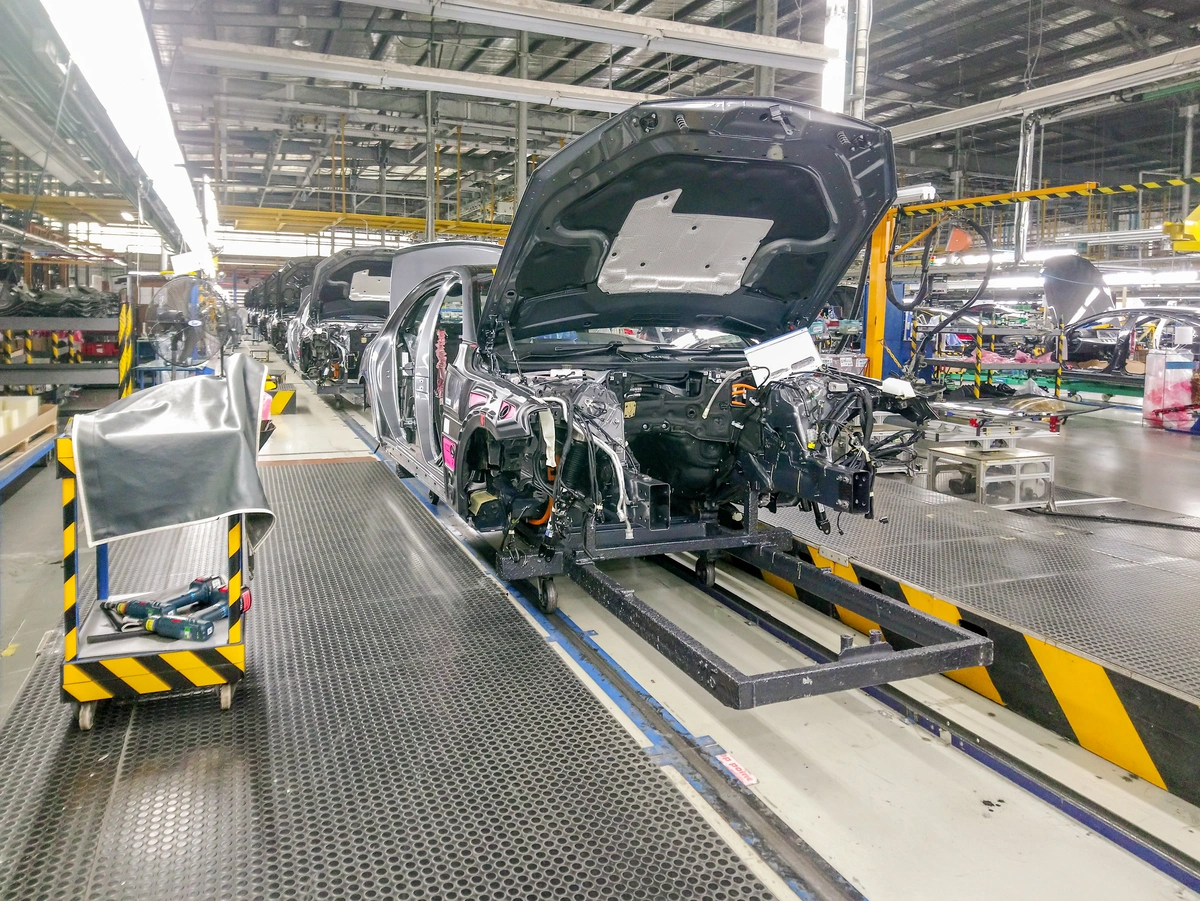The back-to-back passage of the $1.2 trillion Infrastructure Investments and Jobs Act and the technology-centric $280 billion CHIPS and Science Act has paved the way for public-private partnership opportunities galore.
Transformative infrastructure projects – including thousands of clean energy initiatives nationwide, along with the historic and vital $33 billion Gateway Project, which is focused on modernizing railway transportation in the Northeast, to the 10-year, $100 billion statewide roadways overhaul in Texas, and the $250 million allocated for the development of a deep-water port in Nome, Alaska, a critical investment by the United States in the Arctic – will collectively require drawing more skilled people into the building and construction trades.
Associated Builders and Contractors, a national trade group, estimates that the industry will need to surpass standard hiring rates by nearly 1 million workers over the next two years to keep up with the current demand. “The construction industry must recruit hundreds of thousands of qualified, skilled construction professionals each year to build the places where we live, work, play, worship, learn, and heal,” said Michael Bellaman, ABC president and CEO, while touting projections calling for an additional 546,000 workers in 2023 and 342,000 more in 2024.
Employers raring to ride this decades-long growth wave must prepare talented, yet adaptable, personnel and create equitable career pipelines that build generational wealth, reduce inequities, and pave the way for the future of the American workforce.
Gary LaBarbera, President of the Building and Construction Trades Council of Greater New York, has focused on exactly that, training hardworking candidates ready to tackle post-pandemic recovery efforts in the tri-state area.
“The Building Trades have long anticipated an increased need for a highly skilled and effective construction workforce and have taken measures to ensure that New York is prepared to address these needs and push these projects forward,” LaBarbera told Ichor Strategies. He heaped praise on the associated pre-apprenticeship and apprenticeship programs that have helped fill his ranks, noting that those critical connectors “give New Yorkers of all backgrounds the opportunity to pursue a family-sustaining, middle-class career in the unionized construction industry.”
Squandering the historic chance to cultivate new career pathways – particularly for financially insecure members of traditionally underserved communities such as women and people of color – is not an option. Workforce equity is imperative.
One way to speed along a workforce realignment is downplaying the need for four-year college degrees and prioritizing vocational training and relevant real-world experience.
The Re-Learning Curve
“We have this stigma with working with your hands like that's supposed to mean you have less of a brain," Robb Sommerfeld, co-founder of the National Center for Craftsmanship, recently told online news outlet Axios. "That's absolutely not the case."
Decades of data crunched by Georgetown University’s Good Jobs Project bear out that non-college-degree holders have earned up to $60,000 a year in tens of millions of skills-based roles over the past 20 years. Recent data from the U.S. Bureau of Labor Statistics shows that in 2022, workers over 25 earned less than $50,000 a year if they had only completed some college coursework ($45,000) or a high school diploma ($41,000). Annual earnings climbed from there depending on additional education, rising from $69,000 for a bachelor’s degree to $100,000 for a doctorate.
State leaders from across the political spectrum are doing their part, rolling back degree requirements for local government jobs in both red states Utah and South Dakota and purple states like Pennsylvania and Maryland.
Pennsylvania Governor Josh Shapiro praised the union-backed carpenters who hand-crafted the podium from which he gave his inaugural address, and he subsequently opened pathways to 65,000 state jobs via an executive order heralding the merits of “apprenticeships, on-the-job training, military training, and trade schools.”
Similarly, Maryland Governor Wes Moore vowed to make the Old Line State a hub of clean energy jobs – stressing that progress does not depend on any piece of paper. “Every student in Maryland will know that there are many paths to success and fulfillment,” Moore pledged.
Leave No Stone Unturned
Savvy P3 leaders must invest in qualified candidates from largely untapped sources, such as technology-focused high schools, community colleges, trade programs, civic groups, and houses of worship.
And businesses looking to outmaneuver future labor shortages must strengthen the current workforce by providing transferable skills that will enable people to switch careers as needed. While wholesale upskilling may sound like a recipe for empowering staff to seek opportunities elsewhere, retailer Lowe’s found that four out of five participants in its internal trade skills program have stayed on to fill managerial openings.
Providing flexibility is another way to ensure workers can overcome uncertainty in the labor market.
Tech giant Google offers aspiring programmers an alternative career pathway with its online certification program. The Grow with Google plan, which boasts “no experience necessary” and promises “professional job training,” maps out a three-to-six-month commitment (“learn at your own pace”), which enables participants to earn up to $76,000 a year.
Bolstering existing routes to skilled technical jobs could also pay significant dividends. Trade publication Modern Machine Shop’s editors argue that integrating the few remaining shop classes and technical training courses scattered throughout public school curriculums into a federally funded career track would fortify U.S. manufacturing for generations. ABC is moving in a similar direction, aiming to retrain 1.3 million people to forge a construction industry that is “safe, skilled, and productive.”
“ABC is working hard to recruit, educate and upskill the construction workforce through our national network of more than 800 apprenticeship, craft, safety, and management education programs — including more than 300 government-registered apprenticeship programs across 20 different construction occupations — to build the people who build America,” Bellaman said of the ongoing efforts.
Yale University senior fellow Blair Miller supports trying anything and everything to propel job creation into the stratosphere.
“It’s time to unlock opportunities through moonshot efforts that combine technological innovation, multisector partnerships, and targeted public spending to tear down artificial barriers and stand-up workers,” she wrote in an op-ed for political outlet The Hill.
Turbocharging the Workforce
President Joe Biden primed the pumps for a skills-based hiring blitz last fall by rolling out a nationwide Talent Pipeline Challenge.
The campaign, which focuses on fulfilling infrastructure-related goals through equitable hiring practices, urges government contract seekers to include women and underrepresented groups in any applicable training partnerships, develop quality pre-apprenticeship programs that feed into registered skills-based training pipelines, and invest in financial resources (tuition assistance, childcare, transportation costs) to assist workers otherwise unable to afford additional training.
Business Roundtable members raced to embrace skills-based professionals during the height of the pandemic.
Its Multiple Pathways Initiative, spearheaded by companies ranging from computing icons Cisco Systems and IBM to big-box chains Best Buy and Walmart, advocates for advancement opportunities attained through mentorships, apprenticeships, online learning, and on-the-job experience, and carves out career pathways for self-starters who complete skills-based training programs or technical certifications like Grow with Google.
The first employers to get it right will have expanded P3s to capture another crucial partner: People. By partnering with and actively investing in communities, infrastructure leaders can ensure that America meets this – and any forthcoming – labor challenge.
“Developing a workforce requires long-term investment in our tradesmen and tradeswomen,” LaBarbera said of the foundation building involved. But the payoff will be that the country’s “labor needs will not only be met but exceeded.”
Leecia Eve, a former New York State Deputy Secretary for Economic Development and a former general counsel at Empire State Development, is based in New York.
Public policy consultant and economics analyst Marco Chaidez is based in Chicago.
Both Leecia and Marco are members of the Growth Team at Ichor Strategies.




